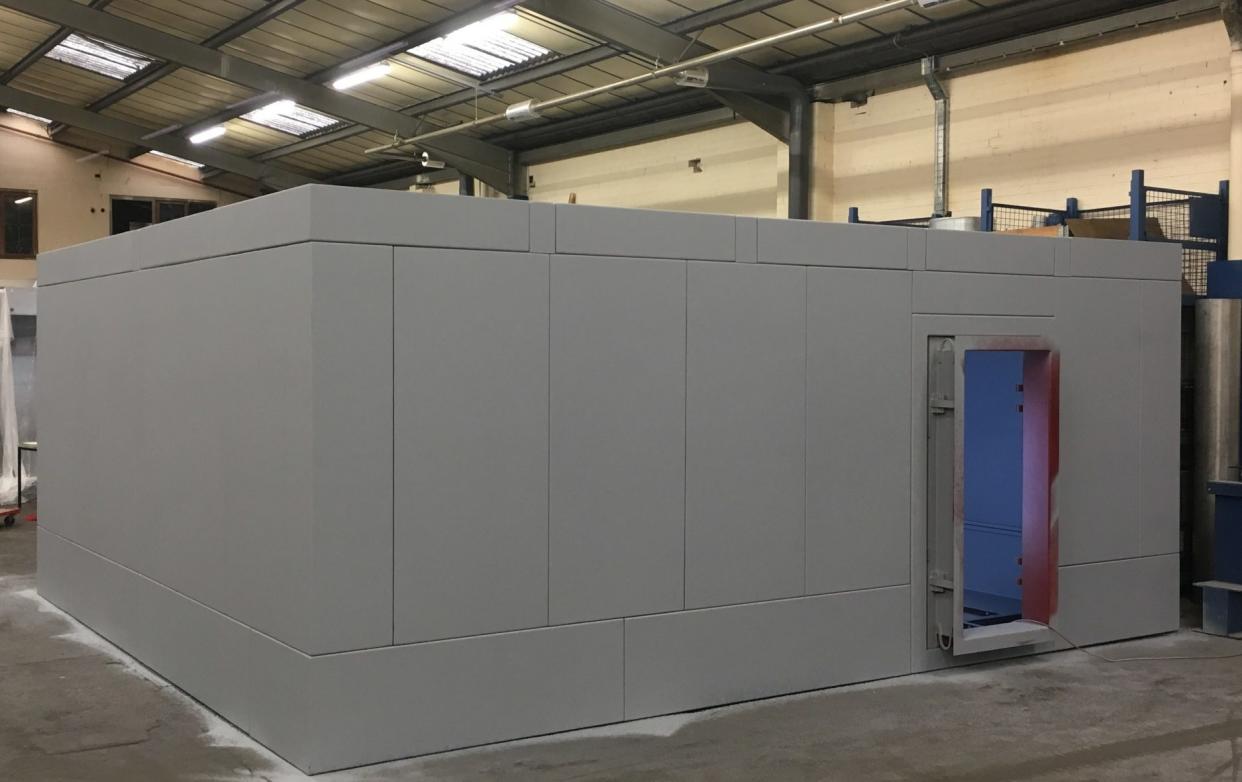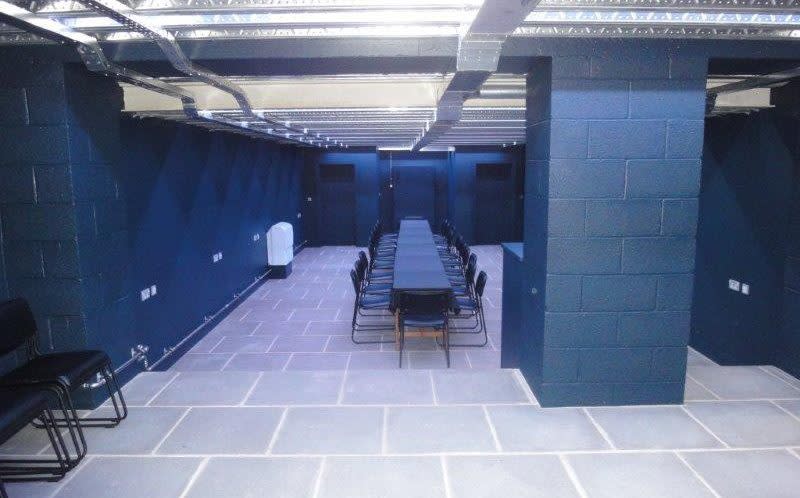Bunkers become a boom industry amid fallout from world’s conflicts

- Oops!Something went wrong.Please try again later.
How to protect your family in the event of a nuclear strike may not be top of your list when it comes to making improvements to your home.
An extension, loft conversion, new kitchen or renovation, maybe – but a fully secure underground shelter with its own power and water supply?
Unlikely though a nuclear attack may seem, the ongoing conflict in Ukraine and the shock of hostilities in the Middle East last month have forced us to confront a new world.
Last year a petition was started to get Parliament to debate a proposal to ‘build underground nuclear bunkers with all facilities for the public’. The UK has only 258 communal shelters – compare that with Switzerland’s 360,000, enough to accommodate its entire population.
Although the petition was rejected, it is evidence, says Panic Room Company director Paul Weldon, that the public are worried about a place to shelter in the event of nuclear war.
Since Russia’s invasion of Ukraine in February 2022 Vladimir Putin has been unafraid to turn up the rhetoric on how far he is prepared to go. And it has been the catalyst for some to take action.
Charles Hardman, owner of specialist panic room and bunker builder Subterranean Spaces, said the phone was busy with requests in the first months after Russia’s invasion.
“I got many inquiries, some from high profile people in the UK and from people overseas who had property in the UK,” he says.
“I started designing bespoke bunkers for those clients. The enquiries steadied but when there was some concern on the news about a development with Russia-Ukraine the phones started up again. This seems to be the pattern.”

It happened again with the conflict in the Middle East last month. “I got two enquiries for nuclear bunkers the week the conflict started,” he said.
Some have been after residential protection for longer. In 2017 Weldon was asked to build a bunker in leafy and well-heeled Wimbledon.
“We designed and installed a shelter with its own generation power supply and water unit,” he says.
“We did that one and then off the back of that we have done some more, some internationally as well. The builder who was doing the fit out with us had struggled to find anyone who could fill the brief. We could fill that specification.”
Like Hardman, he says there has been a ‘flurry’ of interest in both over and underground bunkers since the invasion of Ukraine.
“Some [clients] are trying to protect from a very close explosion but some of the units are a little bit more rural. So they are looking at they may be on the outskirts of a blast radius and be there for up to four weeks. Just sit it out knowing they have breathable air,” he says.
The units are kitted out with safe drinking water, dried food and things you need to sustain life.
“We have done about half a dozen since Ukraine,” says Weldon. “It is the nature of the business.”
But not all clients are looking to build a full nuclear bunker. Instead some are investing in equipment such as NBC (nuclear, biological and chemical) filter systems.
From safe rooms to bunkers with swimming pools
Others are looking at converting existing rooms in their homes into panic rooms that do not offer the full protection of a bunker, but provide more security than the rest of the house.
“Initially it was just about the Ukraine war but as it has gone on people have looked at the bigger picture and are uneasy,” Weldon adds.
“The wealthy are definitely worried because what I have found is where I have just been putting a safe room in a big new renovation, now the mindset is should we go to the next level, to add in a water filtration system.
“When doing a renovation, panic rooms are now part of the build as well as a swimming pool, new kitchen etc.”
The fitting out of a safety room usually takes about six weeks, while installing and kitting out a full bunker takes around three months.
Converting a cellar or basement is another option, says Valdas Macys, head of international sales at Castellex - maker of NBC air systems. “They are not as sophisticated as a purpose built shelter but will increase your chance of survival. The most important thing is to survive the blast and the shock after.”
There are also other factors to consider.
“The process of designing a nuclear bunker is not easy,” says Hardman. “There is a planning process to go through and that can be difficult. The planning departments can’t seem to get a grip on a nuclear bunker in their planning policy.”
Engineering considerations and technical issues around building controls also need to be looked at. It is also not cheap. Prices for panic rooms to bunkers typically range from £250,000 to £1.5m.
Recommended
The secret to transforming your home – without planning permission
And at the top end of the spectrum bunkers are equipped for long stays and made to be as comfortable as possible.
“You need an entrance and an escape route, some have tunnels from homes for access, blast doors, blast valves to maintain pressure in the event of explosions, cleaning areas; technical areas that power the bunker,” explains Hardman.
They often also include a contamination area where you can wash down; bedrooms, a kitchen, some common living space, an exercise area, reading or entertainment areas.
“I have had requests to design bunkers for families, parents, grandparents, nannies, cars, dogs, staff and so on,” says Hardman.
Hardman recommends building a bunker that can sustain life for three to six months, but should be longer if possible.
It is not just the UK. Hardman, Macys and Weldon all do significant amounts of work abroad.
“Lately I have been getting more consultations from Europe and other parts of the world, rather than the UK,” says Hardman. “At present I am designing bunkers overseas in Portugal, and am getting enquiries from other companies and affiliates that wish to become a part of the company.”
He also works on corporate bunkers that can be fitted to accommodate a larger group of people.
As well as surviving nuclear fallout, the addition of a bunker to your property could have another benefit – increasing your house price.
“I would suggest yes, having a panic room or bunker does add value to a property now. Because of the increase in demand, it is on people’s mind,” says Weldon.
